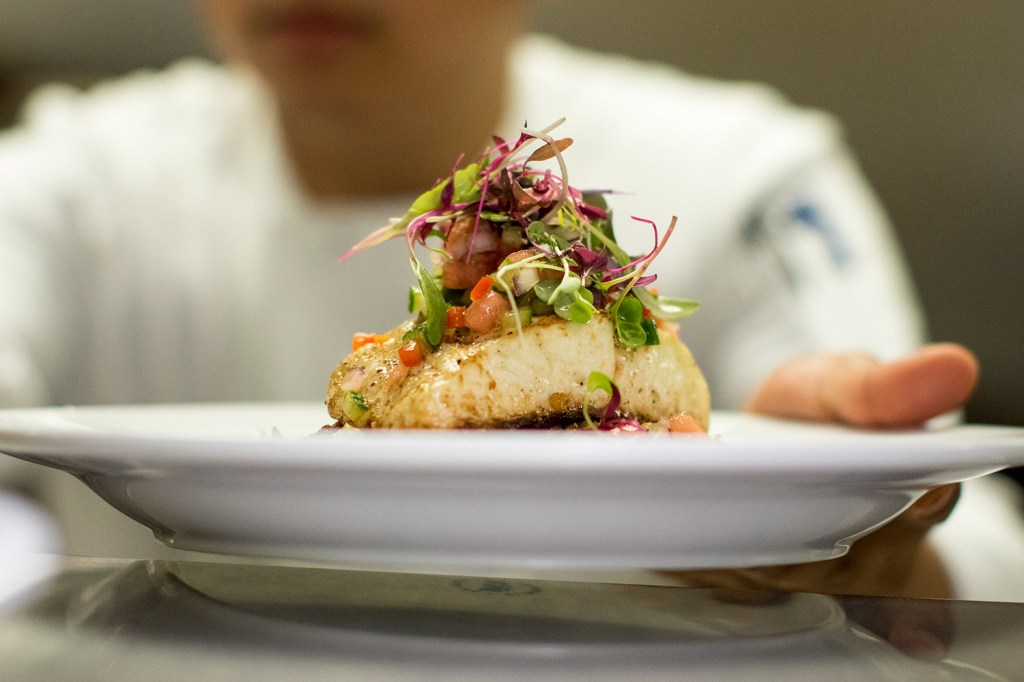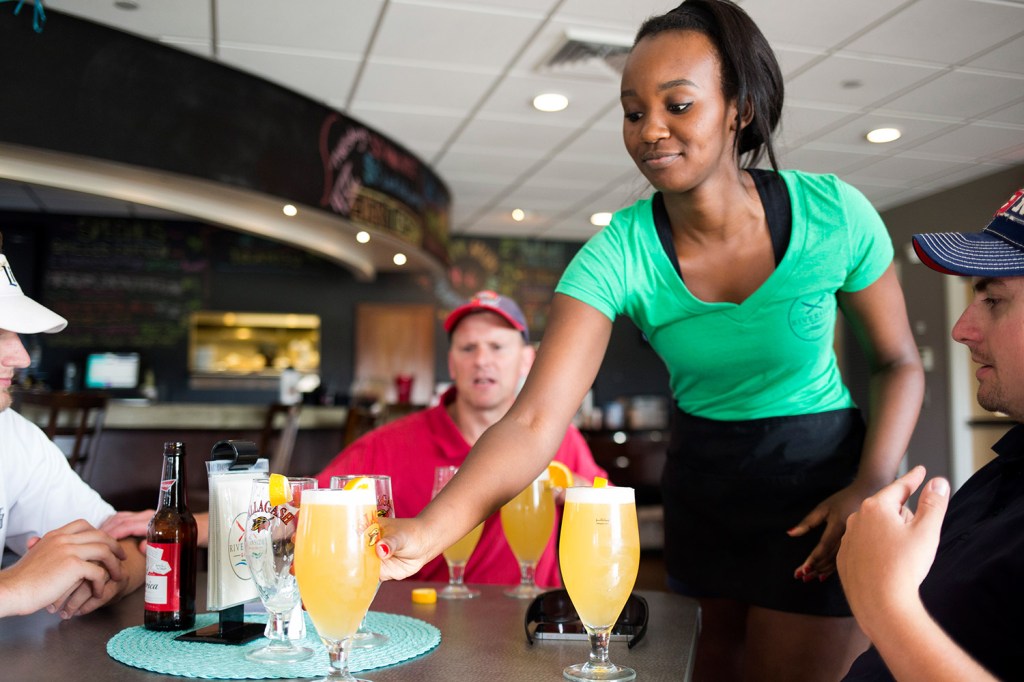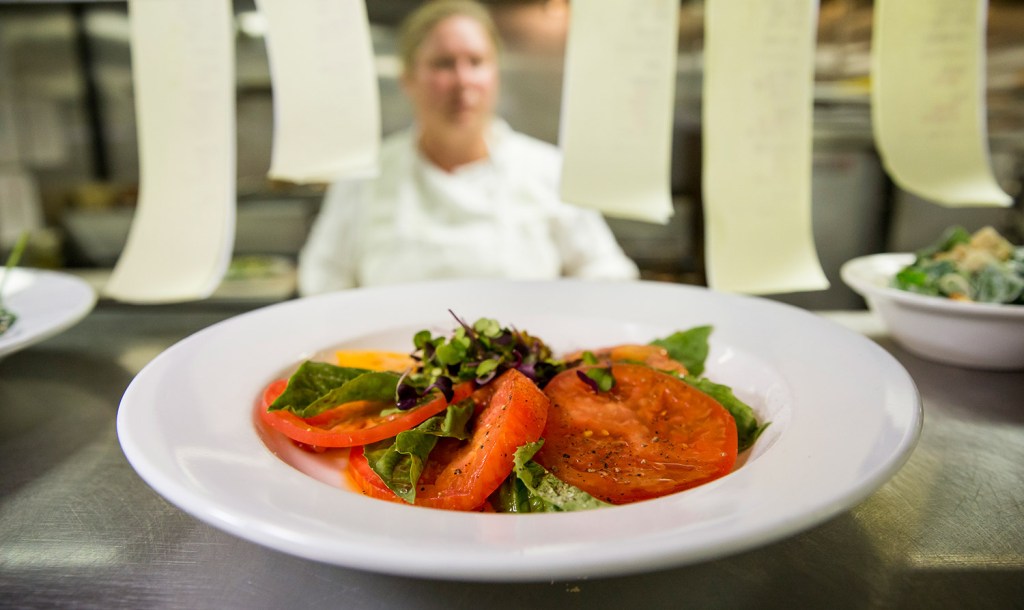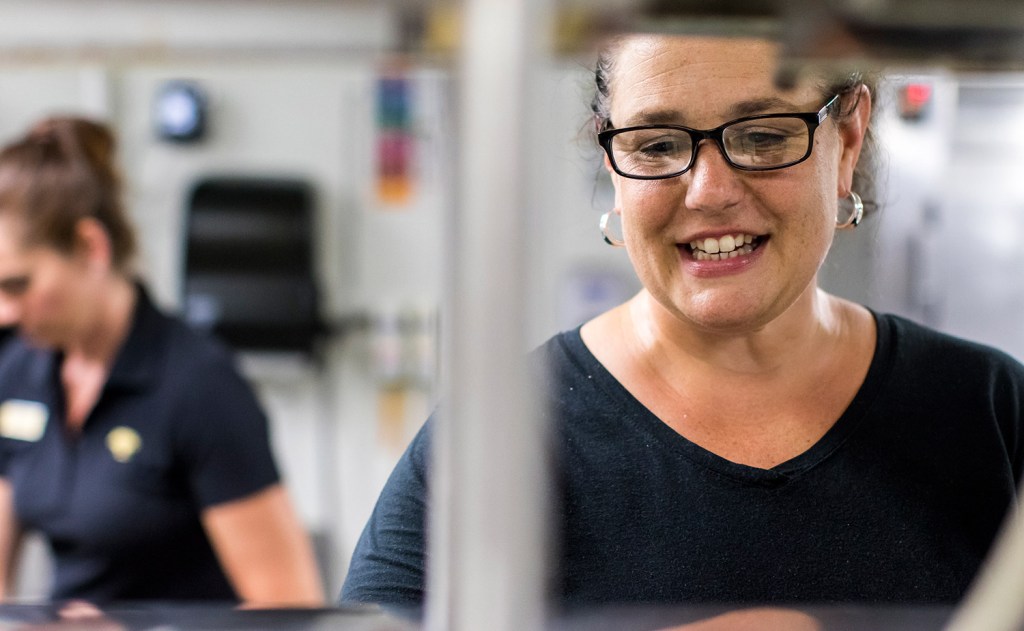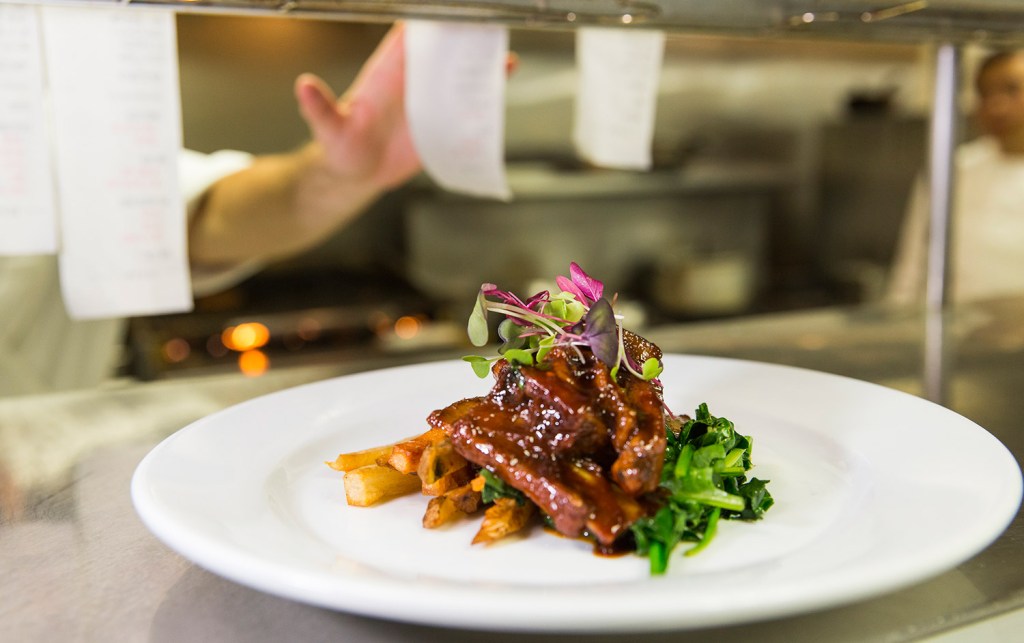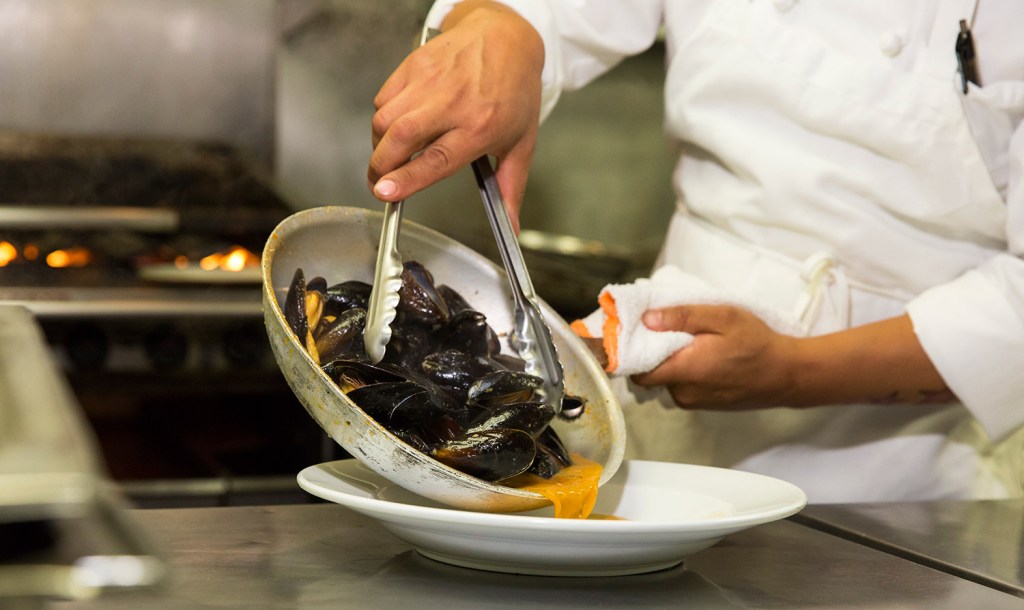You’ve just wrapped up 18 holes of golf and are ready for a cool drink and something to eat. Something light – maybe fish?
Ten years ago, if you were playing at Riverside Municipal Golf Course, you had to settle for a hot dog or a burger. Today, fish-loving golfers dining at the Riverside Grill can choose from among roasted mussels, beer-battered lobster bites with tequila honey mustard sauce, Maine crab cakes and a fried fish sandwich made from local haddock. And they can enjoy their meals on a new deck, watching the sun set over the fairway.
Two years ago, a golfer playing at the Biddeford-Saco Country Club would have had only basic pub fare to choose from – burgers and fries, sandwiches and paninis. Now the private club, which has 500 members but keeps its restaurant open to the public, offers more sophisticated specials, too, including grilled swordfish with lemon-dill butter over jasmine rice.
At York Golf & Tennis Club, which hosted the Maine Amateur Championship a couple of weeks ago, the chefs are running a scratch kitchen, making their own sauces, grinding their own burgers and smoking their own meats. A hungry golfer at the members-only club can eat an upscale entree, like Sesame-Miso Seared Halibut with Sushi Rice, Pickled Vegetables, Corn and Pea Shoot Salad. Or maybe come back on homemade pasta night.
The nation’s food revolution has come to one of its most popular pastimes. Golf courses, especially those in southern Maine, are upping their culinary game to satisfy golfers who are ever more knowledgeable about food – as well as long-suffering non-golfing family members who just want to sit in the clubhouse and enjoy a small plate of deep-fried Brussels sprouts with a glass of good wine.
Turning out better food may or may not help the clubs’ bottom line, but it does keep folks coming back for more – more golf, and (if you are at the York club) more Porcini- and Chili-Rubbed Veal Porterhouse with Cheddar Polenta and Roasted Tomato and Arugula Salad.
UPPING THEIR GAME
Upgrading golf course food is “a big trend right now,” said chef Justin Lamore, food and beverage manager at the Biddeford-Saco Country Club, where membership costs $2,000 plus $876 in annual dues. Lamore was the longtime chef at Joseph’s By the Sea in Old Orchard Beach before being hired away last year to elevate the golf club’s pub menu. He is also a golfer. “A lot of golf courses never even offered food,” he said. “Golf does make you hungry, and a lot of the golf courses are starting to realize that generating revenue from just the golf itself is great, but why not try to build repeat customers and offer them something that will keep them there longer?”
Whitney Reid, founder of Reid Consulting Services, a Phoenix-based golf and country club consultant, said private golf clubs nationwide have been upgrading their food and beverage menus for the past three to five years.
“Honestly, I think it’s the younger members who are really pushing it into clubs more than anyone,” she said. “The upper end of the millennials that are joining clubs, they have expectations for food and beverage to be more along the lines of the local restaurants, and they’re bringing the global trends that you see on menus everywhere – organic, gluten-free, farm-raised.”
FLAVOR, NOT FORMALITY
Even as the quality improves, most places are keeping it casual, Reid said. Small bars and large fine dining areas are out; casual dining and larger “social bars” are in. The number of pub remodels going on at clubs across the country right now is “astonishing,” she said.
The Riverside Grill in Portland once outsourced its food, and served mostly fast-food burgers and hot dogs. Then the city took over the restaurant and, three years ago, the place underwent a major renovation, from studs to menu, with the help of local chef Steve Quattrucci.
Quatrucci created mouthwatering entrees such as poached Casco Bay haddock with zucchini chips, and English pea ravioli, dishes that drew in non-golfers to eat. But he did not stay long, and neither did the menu. Customer feedback indicated the restaurant had over-corrected on both the style and price of the food, according to Ryan Scott, golf course general manager. Portland golfers didn’t want fancy entrees, Scott said, “and they’re our core clientele.”
But they did want good quality, well-prepared food.
The kitchen is now under the direction of chef Andrew Peters, who tries to satisfy not only golfers but also new non-playing customers from surrounding neighborhoods.
“The restaurant definitely adds to the experience here at the golf course,” Scott said. “When you sit out on that deck, you don’t even think you’re in Portland because of the views. Some of the sunsets are unbelievable.”
The Riverside menu is now a mix of small plates, classic sandwiches, soups and salads, flatbreads and sliders. On a recent weekday, two couples sat on the deck enjoying the late afternoon sun. Inside, the dining room was mostly empty because of the hour – most people were still on the golf course – and a bit dreary; its color scheme is brown, brown and more brown. A television over the stone fireplace aired a golf tournament.
An order of a fried fish sandwich and onion rings arrived quickly. The fish was nicely cooked – hot and crispy outside, moist inside – and the dish cost just $11.
At the other end of the spectrum is the Woodlands Club, a private golf club in Falmouth where membership costs $5,000, plus about $5,000 in annual dues. Here, the menus change every three weeks and the summer kitchen staff of 21, under the direction of executive chef Stephanie Brown, produces stunning food. The club may serve as many as 400 meals in a busy day, not including special events.
A typical dinner from Brown’s latest menu, served recently in the lounge where the TVs were tuned to sports, started with a dozen fried Damariscotta oysters with yellow Bloody Mary mignonette. Next came a simple but dazzling heirloom tomato salad, served with warm pistachio-crusted goat cheese, fresh basil and white balsamic syrup. A $25 entree of Baked Halibut with Cucumber Watermelon Salsa, Summer Green Beans & Roasted Corn Kernels was immensely satisfying and healthful, too.
“Food is a very important part of the environment here, from the hot dog all the way up to the tenderloin,” Brown said.
She sees her role as keeping the membership happy. Not long ago, a golfer requested that she make a “dork burger” – a burger made from duck and pork. Brown not only created one, it became one of the club’s most popular items.
Keeping members happy is what it boils down to, Reid said, a task that has become more challenging as life and work styles change and club memberships become multi-generational.
“It’s no longer just a place where Dad goes to play golf,” she said. “Dad is looking for a place where his whole family can enjoy the club.”
‘BOOT CAMP’ FOR CLUBS
Reid runs a daylong food and beverage training “boot camp” open to golf clubs nationwide to help club employees understand shifting member expectations and how to handle generational differences from a food service perspective.
Ray Stuchbury, executive chef at the Portland Country Club, a private club known for its excellent food, said members seem to want more eating options now than they did 20 years ago. Members who bring in guests for a round of golf tend to sit down and eat at a table, he said, while two buddies playing together will grab a hot dog or sandwich and get back out on the course. “It seems like we have more than one membership. There’s five or six,” he said. “There’s families, older people who don’t want change, younger people who want change every time they walk in.”
HOLE FOODS
Food is an important part of creating the new social atmosphere club members are looking for, Reid said, and clubs must evolve by developing “more exciting” food-and-beverage related programs, such as wine and craft beer tastings.
The 80-seat restaurant at members-only York Golf and Tennis transitioned to a scratch kitchen using whole foods about three years ago, according to general manager Gregg Lindsay. The kitchen roasts its own chickens for chicken salad, grinds it own burgers, and smokes its own pastrami. A couple of weeks ago, the club held a wine tasting with Spanish wines and tapas, and before that, a pig roast. On weekends, the menu includes some higher-end specials. Food events are often accompanied by family-oriented activities, such as lawn games.
The food and beverage operations at golf courses usually are not expected to be big money makers, Reid said. Traditionally, restaurants, pubs and snack bars have been considered amenities that add value to a club membership. But at Biddeford-Saco, where the pub is open to the public, Lamore is already seeing a financial windfall from the changes he’s made in the club’s food service: His department’s earnings are up $23,000 from last year. The added revenue, he said, will help keep annual membership dues down.
“We do want to create a profit to put back into the club,” he said. “But if we break even, that’s OK. I’m able to produce a quality product at a really reasonable price, which keeps people coming back.”
Even at the most exclusive clubs, paying attention to food can affect the bottom line.
“We’ve had an increase in our dining sales continuously, last year and the year before, and this year we’re exceeding last year,” said Brown of the Woodlands Club.
But one thing is clear, no matter how prestigious the golf venue: The humble hot dog isn’t going anywhere.
When golf season rolls around, even the Portland Country Club fires up the hot dog steamer.
Some things will never change.
Send questions/comments to the editors.


